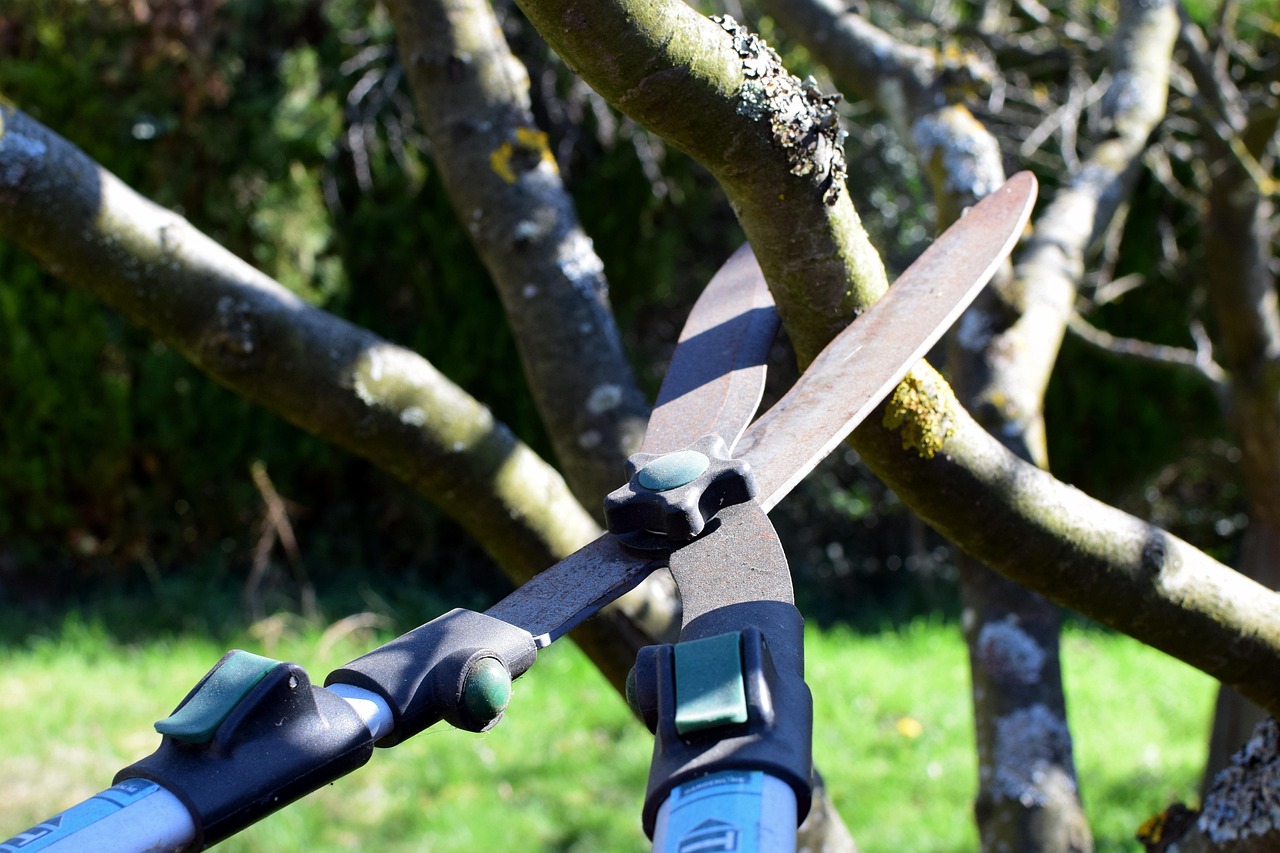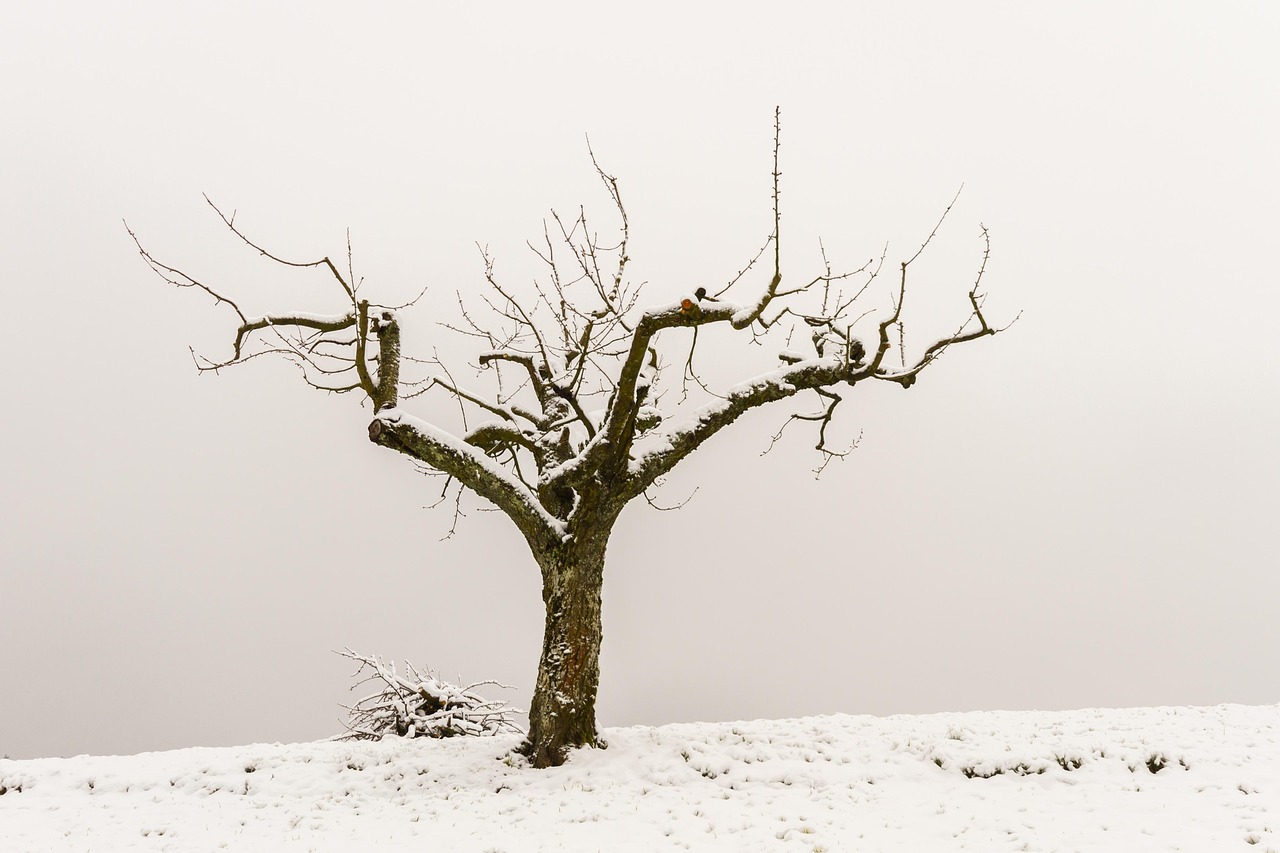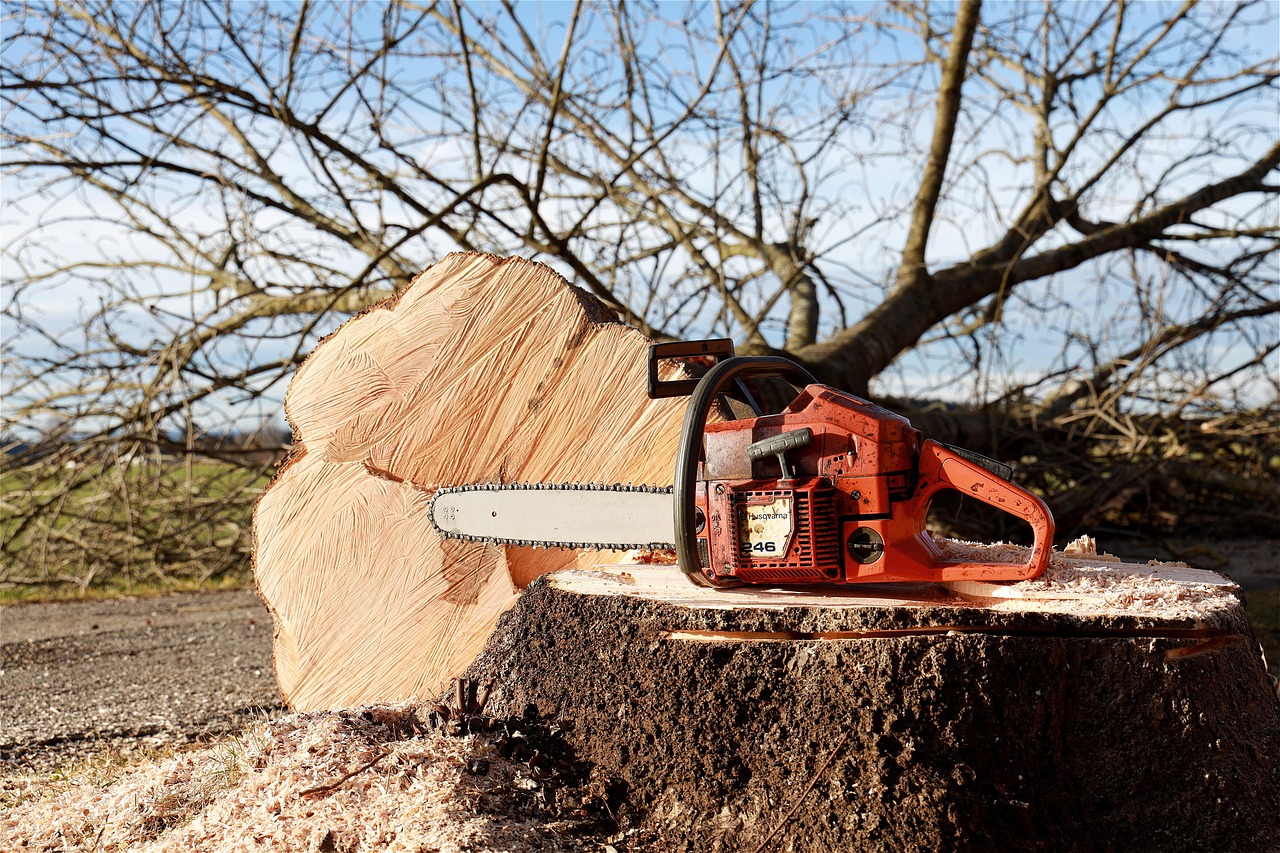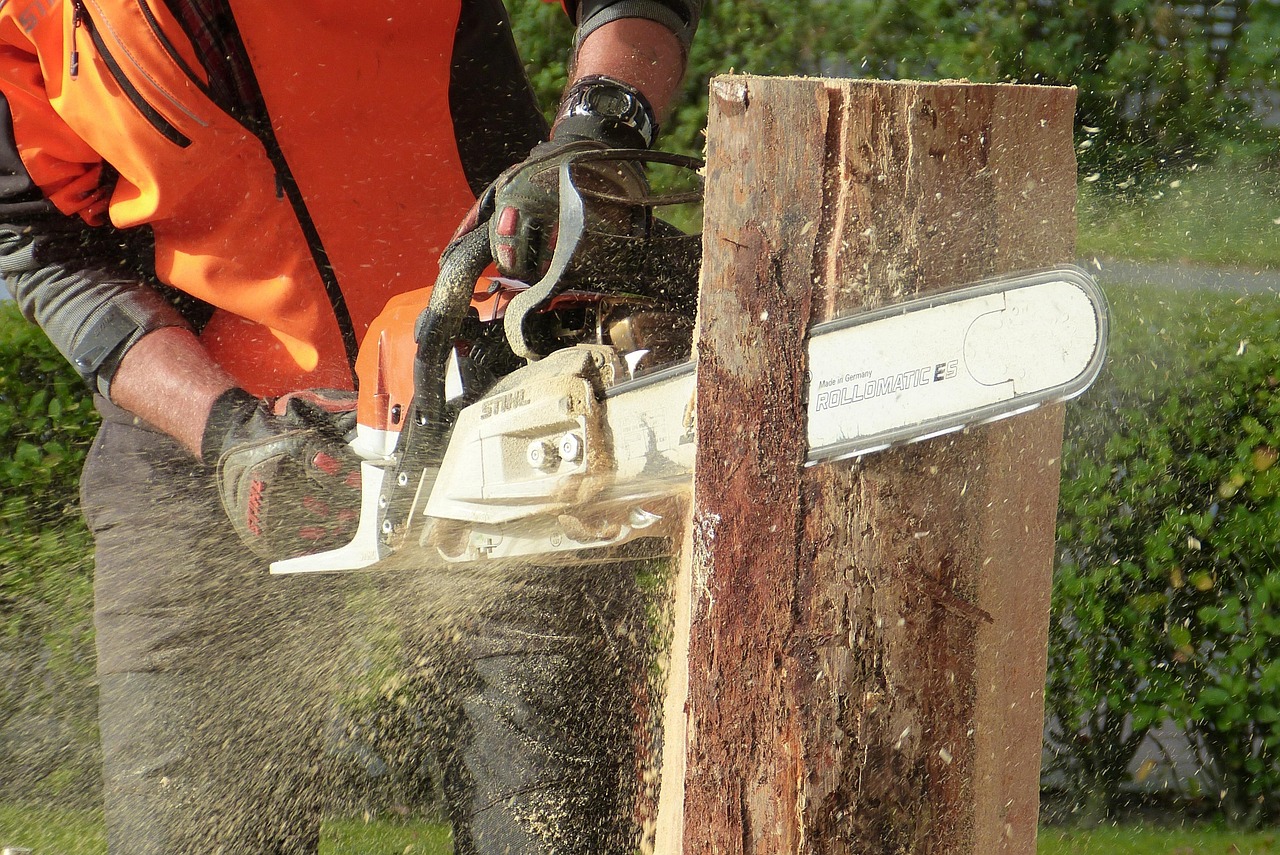Tree pruning around pools and recreational areas is essential for safety and aesthetics. Regularly trim branches that overhang or pose a hazard to people, structures, or equipment. Remove dead or diseased limbs to prevent accidents and promote healthy growth. Additionally, ensure that trees do not obstruct sunlight or views, enhancing the overall enjoyment of these spaces.
Tree pruning around pools and recreational areas is essential for safety, aesthetics, and health. Regular pruning helps prevent branches from falling into the pool, reduces debris, and enhances the overall appearance of the landscape.
Maintaining trees in proximity to pools and recreational areas involves careful consideration. Trees provide shade, enhance beauty, and contribute to the ecosystem. However, if not properly managed, they can also pose risks. Overgrown trees may drop debris into pools, attract pests, or even damage structures. Therefore, understanding the importance of tree maintenance is crucial for any property owner.

Pruning is the process of selectively removing certain parts of a tree. This can include branches, leaves, or even roots. The primary goals of pruning are to ensure safety, promote healthy growth, and maintain a pleasing appearance. Different species of trees require different approaches to pruning, making it essential to know what you are dealing with.
Benefits of Pruning Trees Around Pools
Pruning trees around pools and recreational areas offers several benefits:
- Safety: Regular pruning reduces the risk of falling branches that could injure individuals or damage property.
- Aesthetics: Well-maintained trees enhance the beauty of your landscape, creating an inviting atmosphere.
- Health: Removing dead or diseased branches promotes healthier growth and reduces the likelihood of pest infestations.
- Debris Reduction: Less leaf litter and debris around pools means less maintenance and cleaner water.
Understanding when and how to prune is equally important. Pruning at the right time can significantly impact a tree’s health and growth. Different types of trees have specific seasons when they should be pruned to minimize stress.

When to Prune Trees
Timing is critical when it comes to tree pruning. Here are some general guidelines on when to prune various types of trees:
| Tree Type | Best Time to Prune | Notes |
|---|---|---|
| Deciduous Trees | Late winter to early spring | Before new growth begins. |
| Evergreen Trees | Late spring to early summer | Avoid heavy pruning in fall. |
| Fruit Trees | Late winter to early spring | Aim for before flowering. |
| Flowering Trees | After flowering | Prune immediately after blooms fade. |
Each tree type has its unique requirements. For instance, deciduous trees benefit from pruning while they are dormant. This minimizes stress and allows for vigorous growth in spring. Conversely, flowering trees should be pruned only after their blooms have faded to avoid cutting off next year’s flowers.
Tools for Effective Pruning
Having the right tools makes a significant difference in the effectiveness of your pruning efforts. Essential tools include:

- Hand Pruners: Ideal for small branches, hand pruners are easy to use and allow for precise cuts.
- Loppers: These are suitable for thicker branches that cannot be managed with hand pruners.
- Saws: A small hand saw or pole saw may be necessary for larger branches or higher reaches.
- Safety Gear: Always wear gloves, goggles, and protective clothing to prevent injuries while pruning.
Using sharp tools is essential for making clean cuts that heal quickly. Dull tools can tear bark and lead to wounds that may attract pests or disease.
Pruning Techniques to Consider
There are several techniques to consider while pruning trees around pools and recreational areas:
- Crown Thinning: This involves selectively removing branches to increase light penetration and airflow.
- Crown Raising: Removing lower branches allows for more space underneath the tree. This is particularly useful near pools.
- Crown Reduction: This technique reduces the overall size of a tree while maintaining its natural shape.
Each technique serves a specific purpose and should be chosen based on the needs of the tree and its surroundings. Proper technique can enhance the health of the tree while ensuring safety around recreational areas.

In summary, tree pruning around pools and recreational areas is vital for safety and aesthetics. Understanding the benefits, timing, tools, and techniques can help property owners maintain their landscapes effectively. The right care ensures that trees remain healthy while minimizing risks associated with overgrowth.
Understanding Tree Growth Patterns
To effectively prune trees around pools and recreational areas, it is essential to understand their growth patterns. Trees grow in a variety of ways, influenced by species, environmental conditions, and care. Recognizing these patterns helps in determining the best pruning methods and times.
Most trees exhibit two main types of growth:
- Apical Growth: This type of growth occurs at the tips of branches. Trees with strong apical dominance grow taller and develop fewer lateral branches.
- Lateral Growth: This growth occurs along the sides of branches. It contributes to a tree’s overall width and shape.
Understanding these growth patterns aids in making informed decisions during pruning. For instance, trees with strong apical growth may require different strategies than those that spread laterally.
Factors Influencing Tree Growth
Several factors can influence how trees grow, which in turn affects how they should be pruned. Key factors include:
- Species: Different species have varying growth rates and forms. Some trees may require more frequent pruning than others.
- Soil Quality: Healthy soil promotes robust growth. Poor soil can lead to weak branches that are more prone to breaking.
- Climate Conditions: Weather plays a crucial role in tree health. Extreme temperatures, drought, or excessive rainfall can impact growth patterns.
- Pests and Diseases: Infestations or illnesses can weaken trees, making targeted pruning necessary to promote recovery.
By considering these factors, property owners can better understand how trees will respond to pruning and what techniques will be most effective.
Signs That Trees Need Pruning
Identifying when to prune is crucial for maintaining healthy trees around pools and recreational areas. Here are some signs that indicate a tree may need pruning:
- Dead or Dying Branches: These branches are not only unsightly but can also pose safety risks. Removing them can prevent accidents.
- Overcrowded Canopy: If the branches are too dense, light and air cannot penetrate properly. This can lead to unhealthy growth.
- Branches Touching Structures: Branches that touch roofs, fences, or pool areas should be pruned back to prevent potential damage.
- Pest Infestation: If pests are concentrated in certain areas of a tree, pruning those sections can help control the issue.
Regular inspections can help spot these signs early, allowing for timely interventions that promote tree health and safety.
Pruning Techniques for Specific Tree Types
Different tree species may require unique pruning techniques. Here are some common tree types and recommended approaches:
Deciduous Trees
For deciduous trees, such as oaks and maples, consider the following techniques:
- Selective Pruning: Remove specific branches to improve structure and promote healthy growth.
- Crown Cleaning: Remove dead, diseased, or broken branches to maintain health.
- Crown Thinning: Selectively thin branches to increase light penetration and air circulation.
Evergreen Trees
Evergreen trees, like pines and spruces, require careful pruning to maintain their shape:
- Tip Pruning: Snip off the tips of branches to encourage bushier growth.
- Shearing: Use this method for hedges or shrubs to maintain a neat appearance.
Fruit Trees
Pruning fruit trees is essential for optimal fruit production. Follow these techniques:
- Open Center Pruning: Create an open canopy that allows light to reach all branches.
- Suction Pruning: Remove weak shoots and encourage strong fruiting limbs.
The Role of Professional Arborists
While homeowners can perform basic pruning, there are times when hiring a professional arborist is advisable. Arborists possess specialized knowledge and skills necessary for more complex pruning tasks. Here are some reasons to consider hiring a professional:
- Expertise: Arborists understand tree biology, growth patterns, and proper pruning techniques.
- Safety: Working at heights or with large branches can be dangerous. Professionals have the right equipment and training to perform these tasks safely.
- Disease Management: Arborists can identify and treat tree diseases effectively, ensuring long-term health.
Investing in professional help can save time and reduce risks associated with improper pruning practices.
Caring for Pruned Trees
After pruning, it is crucial to care for the trees properly. Adequate care promotes healing and encourages healthy growth. Consider these steps:
- Watering: Ensure the tree gets sufficient water, especially during dry spells, to help it recover from pruning stress.
- Nourishing: Applying a slow-release fertilizer can support new growth after pruning.
- Pest Control: Monitor for signs of pests or diseases post-pruning. Early intervention is key to maintaining tree health.
Caring for pruned trees enhances their resilience, ensuring they remain safe and healthy around pools and recreational areas.
Environmental Considerations in Tree Pruning
When pruning trees around pools and recreational areas, it is essential to consider the environmental impact. Trees are integral to the ecosystem, providing benefits such as improved air quality, habitat for wildlife, and shading. Proper pruning practices can help maintain these ecological benefits while ensuring safety and aesthetics.
Impact on Local Wildlife
Many trees serve as homes for various wildlife species. During pruning, it is important to minimize disruption to these animals. Here are some key considerations:
- Nesting Seasons: Avoid pruning during the nesting season for birds, which typically occurs in spring. This helps protect nesting areas and supports local wildlife.
- Insect Habitats: Some insects rely on trees for habitat. Be mindful of beneficial insects that contribute to pollination and pest control.
- Tree Hollows: Trees with hollows often provide shelter for bats and other mammals. Pruning should focus on maintaining these critical structures.
By being aware of local wildlife and their needs, property owners can make informed decisions that benefit both trees and animals.
Seasonal Pruning Tips
Pruning is not just a one-time task; it requires attention throughout the seasons. Each season presents unique challenges and opportunities for tree care. Here are some seasonal tips for effective tree pruning:
Spring Pruning
Spring is a critical time for tree growth, and proper pruning can set the stage for a healthy growing season:
- Monitor New Growth: As trees begin to bud, evaluate their structure. Remove any dead or crossed branches to support healthy development.
- Focus on Fruit Trees: Early spring is an excellent time to prune most fruit trees before they start blooming, ensuring optimal fruit production.
Summer Pruning
Summer pruning can help control growth and improve light penetration:
- Light Pruning: Remove weak or unhealthy growth while the tree is fully leafed out to see the structure clearly.
- Avoid Heavy Cuts: Limit significant pruning activities in summer to avoid stressing the tree during its active growth period.
Fall Pruning
As leaves begin to fall, trees prepare for dormancy. Fall is a good time for certain types of pruning:
- Dead Wood Removal: Remove any dead or diseased branches to reduce the risk of pests and diseases overwintering.
- Structural Pruning: Fall is a good time to address structural issues as the tree’s energy is directed toward root establishment.
Winter Pruning
Winter is often considered the best time for extensive pruning due to dormant trees:
- Clear Visibility: Without leaves, it is easier to see the tree’s structure and identify areas that require attention.
- Avoid Wet Conditions: Ensure that pruning is done when the ground is dry to prevent soil compaction around roots.
Pest and Disease Management Through Pruning
Pest infestations and diseases can severely affect tree health. Pruning can play a significant role in managing these issues effectively:
Pest Control Strategies
Identifying and addressing pest issues early is crucial. Here are some strategies:
- Regular Inspections: Frequently check trees for signs of pests, such as discoloration, holes, or excessive leaf drop.
- Remove Infested Branches: Promptly prune branches showing signs of infestation to prevent spreading.
- Encourage Beneficial Insects: Maintain a balanced ecosystem by preserving beneficial insects that prey on harmful pests.
Disease Prevention Techniques
Diseases can be managed through targeted pruning practices:
- Cleansing Tools: Always disinfect pruning tools between cuts, especially when dealing with diseased branches, to prevent spreading pathogens.
- Proper Wound Care: Ensure clean cuts during pruning to minimize damage; consider using wound sealants only when necessary.
- Monitor Tree Health: Keep an eye on overall tree health after pruning to catch any signs of disease early.
The Importance of Mulching Around Trees
Mulching around pruned trees provides several advantages that contribute to their health and stability:
- Moisture Retention: Mulch helps retain soil moisture, reducing the need for frequent watering during hot months.
- Weed Suppression: A layer of mulch prevents weeds from encroaching on the tree’s root zone, reducing competition for nutrients.
- Temperature Regulation: Mulch insulates the soil, helping maintain consistent temperatures during extreme weather conditions.
The best materials for mulching include wood chips, bark, straw, or composted leaves. Always apply mulch in moderation, keeping it a few inches away from the tree trunk to avoid rot.
Caring for trees around pools and recreational areas requires careful planning and ongoing maintenance. By understanding growth patterns, seasonal needs, pest management, and effective mulching techniques, property owners can ensure their trees thrive while enhancing safety and aesthetics in these spaces.
Additional Considerations for Tree Pruning
When it comes to tree pruning around pools and recreational areas, there are several additional considerations to keep in mind. These factors can help enhance the health of the trees while ensuring safety and functionality in these spaces.
Choosing the Right Tree Species
When planting new trees near pools and recreational areas, selecting appropriate species is crucial. Some trees are inherently more suitable for these environments due to their growth patterns and maintenance needs:
- Non-Shedding Trees: Opt for species that do not shed leaves or flowers excessively, as this reduces debris in pools and minimizes cleanup.
- Drought-Resistant Varieties: Trees that require less water can thrive in various conditions and reduce the need for frequent irrigation.
- Root Structure: Choose trees with a non-intrusive root system to prevent damage to pool structures and surrounding hardscapes.
Researching local tree species and their characteristics can lead to better decisions that support both landscaping goals and safety.
Community Guidelines and Regulations
Before starting any pruning or planting activities, it is essential to be aware of local community guidelines and regulations. Many communities have specific rules regarding tree maintenance, especially in public or shared spaces. Here are some key points to consider:
- Permits: Some municipalities require permits for significant tree pruning or removal, particularly for protected species.
- Tree Preservation Orders: Be informed about any laws that protect certain trees from being pruned or removed without special permission.
- Community Resources: Engage with local arborist associations or gardening clubs to gain insights into best practices and community standards.
Educating Others About Tree Care
Another important aspect of tree care is educating family members or staff about the proper maintenance of trees around pools and recreational areas. Sharing knowledge can lead to better practices and a stronger commitment to maintaining a safe environment:
- Workshops: Organize workshops to teach basic pruning techniques and tree care practices to community members.
- Resource Sharing: Create handouts or digital resources that explain the importance of tree care and the best practices for maintaining healthy trees.
- Encouraging Responsibility: Foster a sense of responsibility among community members regarding tree maintenance, promoting teamwork in caring for shared spaces.
Final Thoughts
Tree pruning around pools and recreational areas is a vital practice that enhances safety, aesthetics, and environmental health. By understanding the various aspects of tree care—such as growth patterns, seasonal needs, pest management, and proper mulching—property owners can create beautiful and functional landscapes. Selecting the right tree species, adhering to community regulations, and educating others can further contribute to a safe and enjoyable outdoor experience.
Investing time and resources into proper tree maintenance not only benefits individual properties but also enriches the community’s overall landscape. Healthy trees provide shade, beauty, and improved air quality, making recreational areas more inviting. By prioritizing tree care, property owners can enjoy their outdoor spaces while ensuring the safety and well-being of everyone who uses them.
In summary, trees around pools and recreational areas require thoughtful attention and regular maintenance. With the right knowledge and practices, property owners can foster a thriving environment that balances safety with the natural beauty of their surroundings.
